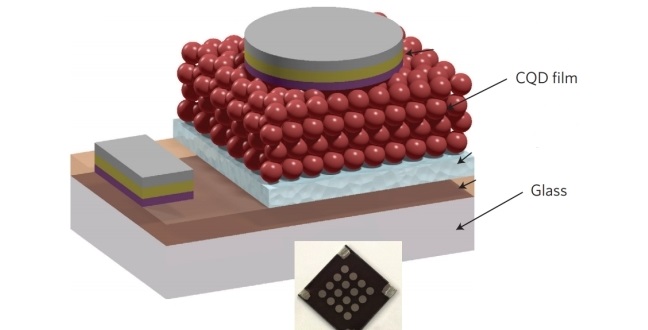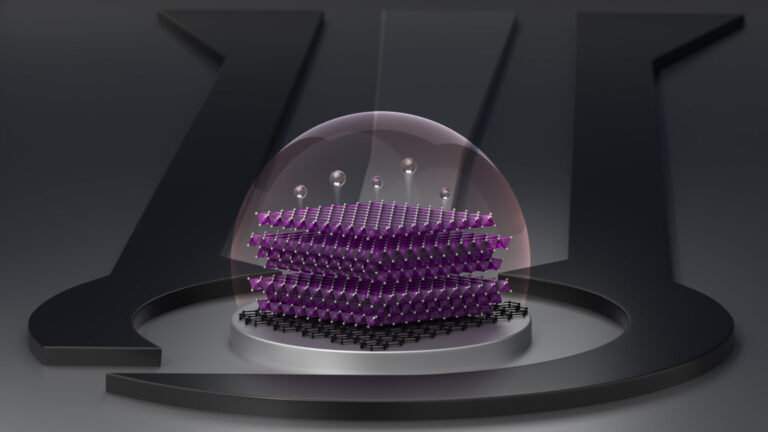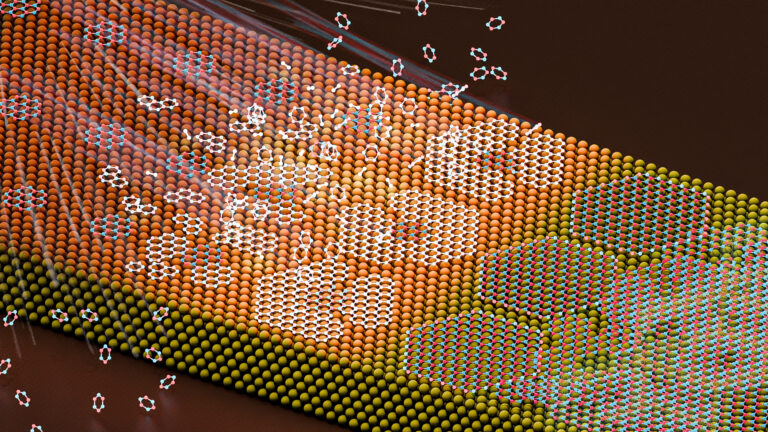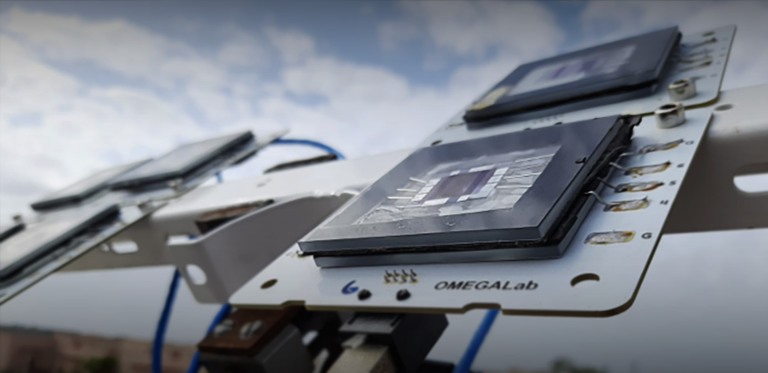Material Science and Engineering
Fewer steps to a shining success
Streamlining the process to fabricate quantum dot devices could improve their potential as low-cost, flexible solar cells.

Harnessing the sun’s energy to generate electricity could be the answer to the world’s growing demand, but only if the process is commercially viable. Researchers from KAUST
are trying to streamline the manufacture of more efficient and versatile alternatives to conventional silicon solar cells.
Colloidal quantum dots – tiny semiconductor crystals that can capture and convert light into electrical energy – are attracting a lot of research interest because their
size allows them to be fabricated like an ink on to a flexible surface cheaplyand easily. Yet efficiency and production issues still limit their potential.
“The ability to use quantum dots to harvest the near-infrared of the solar spectrum opens new opportunities to generate electricity while also managing heat, both of which are particularly welcome in Saudi Arabia,” explains Aram Amassian from KAUST’s Solar and Photovoltaic Engineering Research Center.
These quantum dots – due to quantum effects related to their small size – are much better at absorbing light than regular layers of semiconductors. However at less than 10 percent, their power conversion efficiency is fairly poor, and the dozens of manual steps required to fabricate the light-absorbing layer makes them very expensive to manufacture.
So Amassian’s team, along with collaborators from the University of Toronto in Canada, have tried to find a streamlined method to fabricate quantum dot solar cells to make them
more commercially viable.
One recent breakthrough was to introduce organic ligand molecules which drew the quantum dots very closely together to allow electrical charges to be transported across the solar cell. This process used a solvent, methanol, to deliver the ligand molecules into the solar cell. However if the quantum dots were exposed to the solvent for too long, they were chemically damaged and required labor-intensive, repetitive and wasteful procedures to
fix.
To look for efficiency gains Amassian’s team focused on the solvent. They showed by switching to a more neutral, organic solvent, acetonitrile, the performance of the solar cells improved considerably. Use of the milder solvent also meant that thicker layers of quantum dots could be treated with ligands without compromising efficiency.
Development of quantum dot solar cells still has a long way to go, but such advances in performance and fabrication suggest that new technologies are possible beyond the conventional solar cells now found on rooftops, says Amassian. “These lessons will be crucial in the development of solution-processed, semi-transparent quantum dot
solar cells, which can be integrated into windows, buildings and transportation infrastructure in sunny and warm climates.”
References
-
Kirmani, A. R., Carey, G., Abdelsame, M., Yan, B., Cha, D., Rollny, L.R., Cui, X., Sargent, E.H. & Amassian, A. Effect of solvent environment on
colloidal-quantum-dot solar-cell manufacturability and performance. Advanced Materials 26, 4717–4723 (2014).| article
You might also like

Material Science and Engineering
Electron movie guides design of layered perovskite materials

Material Science and Engineering
Remote region sensor for essential vitamin deficiency

Material Science and Engineering
Low-power hydrogen sensor detects leaks in an instant

Material Science and Engineering
Illuminating pathways to long-lived organic solar cells

Chemistry
Beating the dark current for safer X-ray imaging

Chemical Engineering
Net benefits for advanced materials design

Material Science and Engineering
Atom-thin insulator grown into perfect films

Material Science and Engineering



